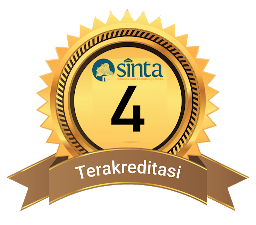The Effect of the Problem-Based Learning Model on Student Learning Outcomes of Grade XI on Reaction Rate Material
DOI:
10.29303/cep.v8i1.8947Published:
2025-05-31Issue:
Vol. 8 No. 1 (2025): Edisi MeiKeywords:
Problem-based Learning, Learning Outcomes, Reaction Rate MaterialArticles
Downloads
How to Cite
Abstract
This research aims to determine the effect of the problem-based learning model on the learning outcomes of reaction rate material in class XI students at SMAN 1 Lingsar. The type of research employed is a quasi-experiment, specifically a non-equivalent control group design. The population in this study consisted of all the students in class XI MIPA at SMAN 1 Lingsar, totaling 143 students divided into 4 classes. The sampling technique used is purposive sampling. The samples in this study were class XI MIPA 2 as the experimental class and XI MIPA 3 as the control class. The experimental class employs a problem-based learning model, while the control class utilizes a conventional learning model. The student learning outcomes were focused on the reaction rate material in the cognitive domain. The data analysis test used in this study is the t-test Gain. The gain in the experimental class (0.47) was greater than the gain in the control class (0.28). The analysis results showed that tcount (3.45) > ttable (2.03) at the 5% significance level, indicating a positive and significant effect of the problem-based learning model on the learning outcomes of reaction rate material for class XI students at SMAN 1 Lingsar.
References
Aftriani, D. N., Muntari., Haris, M., & Anwar, Y.A.S. (2019). Pengaruh Pembelajaran Inkuiri Terbimbing Pada Pelajaran Kimia Terhadap Kemampuan Berpikir Kreatif Siswa Kelas XI IPA SMAN 2 Mataram, Chemistry Education Practice, 1(2), 1-6. https://doi.org/10.29303/cep.v1i2.979.
Antara, I. P. P. A. (2022). Model Pembelajaran Problem Based Learning Untuk Meningkatkan Hasil Belajar Kimia Pada Pokok Bahasan Termokimia. Journal Of Education Action Research, 6(1), 15-21. https://doi.org/10.23887/jear.v6i1.44292
Arends, R. (2015). Learning to Teach. New York: McGraw-Hill Education.
Ardianti, R., Sujarwanto, E., & Surahman, E. (2022). Problem –based Learning: Apa dan Bagaimana. Diffraction, 3(1), 27-35. https://doi.org/10.37058/diffraction.v3i1.4416.
Astuti, S. W., Andayani, Y., Al-Idrus, S. W., & Purwoko, A. A. (2019). Penerapan Metode Praktikum Berbasis Kehidupan Sehari-Hari Terhadap Keterampilan Proses Sains Siswa Kelas Xi Mia Man 1 Mataram. Chemistry Education Practice, 1(2), 19-25. https://doi.org/10.29303/cep.v1i2.952.
Aziz, A., Rokhmat, J., & Kosim, K. (2017). Pengaruh Model Pembelajaran Berbasis Masalah dengan Metode Eksperimen Terhadap Hasil Belajar Fisika Siswa Kelas X SMAN 1 Gunungsari Kabupaten Lombok Barat Tahun Pelajaran 2014/2015. Jurnal Pendidikan Fisika Dan Teknologi, 1(3), 200–204. https://doi.org/10.29303/jpft.v1i3.259.
Famidani, Yuyun., Andayani, Y., Srikandijana, J., Purwoko, A.B. (2019). Pengaruh Model Pembelajaran Berbasis Masalah dengan Media Lembar Kerja Terhadap Hasil Belajar Siswa SMA. Chemistry Education Practice. 2(1), 1-5. https://doi.org/10.29303/cep.v2i1.1120.
Hayati, L., Loka, I. N., & Anwar, Y. A. S. (2019). Pengaruh Model Pembelajaran Inkuiri Terbimbing Dengan Metode Pembelajaran Terpadu Kemampuan Berpikir Kritis. Chemistry Education Practice, 2(2), 29-35. https://doi.org/10.29303/cep.v2i2.1364.
Jansson, S., Soederstrom, H., Andersson, P. L., &Nording, M. L. (2015). Implementation Of Problem-Based Learning in Environmental Chemistry. Journal of Chemical Education. 5(4), 35-46. https://doi.org/10.1021/ed500970y.
Ari, N. L. P. M., & Wibawa, I. M. C. (2019). Pengaruh Model Pembelajaran Make A Match Terhadap Motivasi Belajar Ilmu Pengetahuan Alam. Mimbar PGSD Undiksha, 7(3), 189–197. https://doi.org/10.23887/jjpgsd.v7i3.19389
Magdalena, I. (2022). Dasar-Dasar Evaluasi Pembelajaran. Sukabumi: CV Jejak.
Magdalena, O., Mulyani, S., & VH, E. S. (2014). Pengaruh Pembelajaran Model Problem Based Learning dan Inquiry terhadap Prestasi Belajar Siswa ditinjau dari Kreativitas Verbal pada Materi Hukum Dasar Kimia. Jurnal.Fkip.Uns.Ac.Id, 3(4), 162–169. http://www.jurnal.fkip.uns.ac.id/index.php/kimia/article/view/4617.
Mardani. N K., Atmadja, N. B., & Suastika, I. N. (2021). Pengaruh Model Pembelajaran Problem Based Learning (Pbl) Terhadap Motivasi dan HAsil Belajar Ips. Jurnal Pendidikan IPS Indonesia, 5(1), 55-65. https://doi.org/10.23887/pips.v5i1.272.
Maryati, I. (2018). Penerapan Model Pembelajaran Berbasis Masalah Pada Materi Pola Bilangan Di Kelas Vii Sekolah Menengah Pertama. Mosharafa: Jurnal Pendidikan Matematika, 7(1), 63–74. https://doi.org/10.31980/mosharafa.v7i1.342.
Peranginangin, A., Barus, H., & Gulo, R. (2020). Perbedaan Hasil Belajar Siswa Yang Di Ajar Dengan Model Elaborasi Dengan Model Konvensional. Jurnal Penelitian Fisikawan, 3(1), 43–50. https://jurnal.darmaagung.ac.id/index.php/jurnalpenelitianfisikawan/article/view/452
Putri, H., Susiani, D., Wandani, N. S., & Putri, F. A. (2022). Instrumen Penilaian Hasil Pembelajaran Kognitif pada Tes Uraian dan Tes Objektif. Jurnal Papeda, 4(2), 139–148. https://doi.org/10.36232/jurnalpendidikandasar.v4i2.2649.
Sugiyono. (2010). Metodologi Penelitian Bisnis. Bandung: Alfabeta.
Sugiyono. (2017). Statistik Untuk Penelitian. Bandung: Alfabeta.
Sugiyono. (2018). Metode Penelitian Kuantitatif, Kualitatif, dan R&D. Bandung: Alfabeta.
Tahya, D., & Saija, M. (2023). Buku Ajar Pembelajaran Inovatif. Sulawesi: Feniks Muda Sejahtera.
Tanjung, Y. I., & Rahmatilla, Z. (2020). Perbedaan Keterampilan Proses Sains (KPS) Siswa Menggunakan Model Pembelajaran Inquiry Training dan Pembelajaran Konvensional Pada Materi Pokok Elastisitas dan Hukum Hooke di SMA. Jurnal Kajian, Inovasi dan Aplikasi Pendidikan Fisika, 6(1), 165-172. https://doi.org/10.31764/orbita.v6i1.2177.
Trianto. (2007). Model-model Pembelajaran Inovatif Berorientasi Kontruktivistik. Jakarta: Prestasi Pustaka.
Author Biographies
Nur Arafah, Pendidikan Kimia, Universitas Mataram
I Nyoman Loka, Pendidikan Kimia, Universitas Mataram
Dodiy Firmansyah, Pendidikan Kimia, Universitas Mataram
License
Copyright (c) 2025 Nur Arafah, I Nyoman Loka, Dodiy Firmansyah

This work is licensed under a Creative Commons Attribution-ShareAlike 4.0 International License.
Authors who publish with Chemistry Education Practice agree to the following terms:
- Authors retain copyright and grant the journal right of first publication with the work simultaneously licensed under a Creative Commons Attribution License 4.0 International License (CC-BY-SA License). This license allows authors to use all articles, data sets, graphics, and appendices in data mining applications, search engines, web sites, blogs, and other platforms by providing an appropriate reference. The journal allows the author(s) to hold the copyright without restrictions and will retain publishing rights without restrictions.
- Authors are able to enter into separate, additional contractual arrangements for the non-exclusive distribution of the journal's published version of the work (e.g., post it to an institutional repository or publish it in a book), with an acknowledgement of its initial publication in Chemistry Education Practice.
- Authors are permitted and encouraged to post their work online (e.g., in institutional repositories or on their website) prior to and during the submission process, as it can lead to productive exchanges, as well as earlier and greater citation of published work (See The Effect of Open Access).






